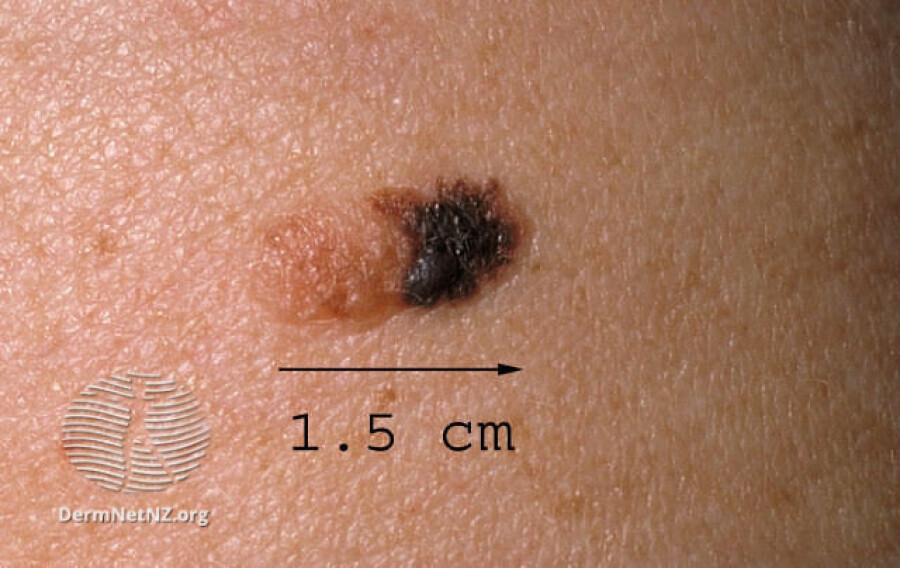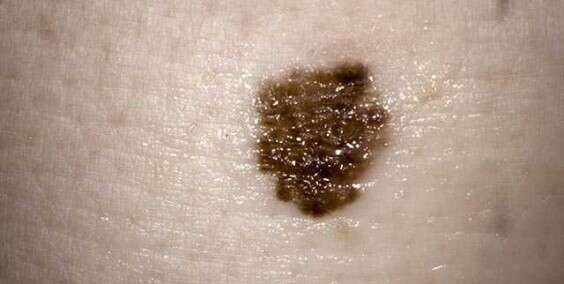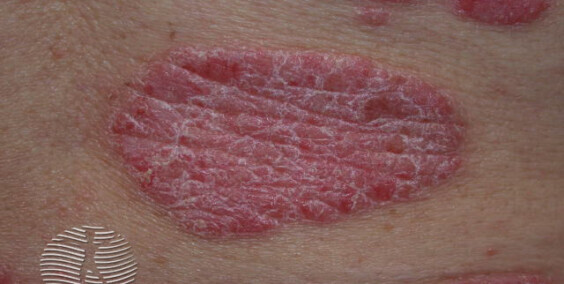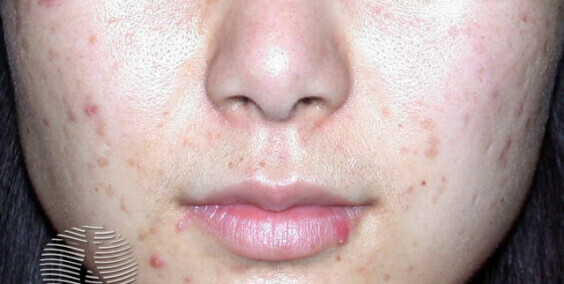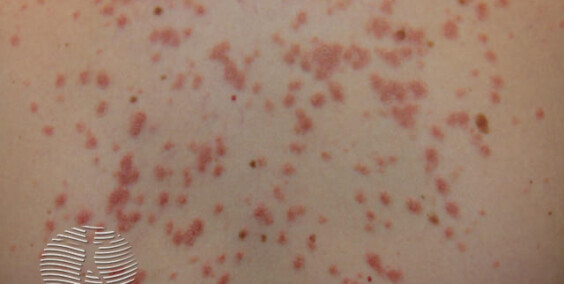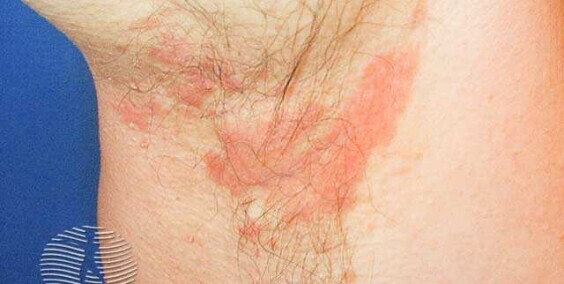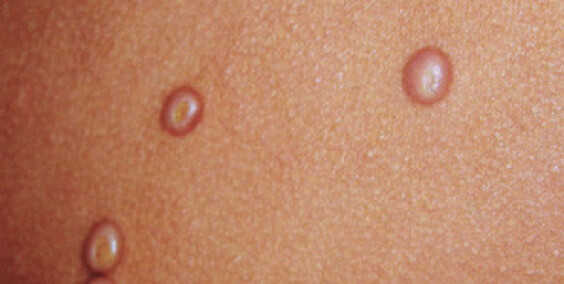Skin cancer poses a serious health risk, underscoring the importance of early identification for effective intervention. In this guide, we delve into the crucial signs and methods for recognizing cancerous moles on the skin, empowering individuals to take control of their health.
What does skin cancer look like in early stages?
Detecting skin cancer in its early stages is crucial for successful treatment and prevention of potential complications. Regular self-examination of the skin is a fundamental practice for early detection. It is advised to be vigilant for changes in existing moles or the appearance of new spots. Skin cancers, including the most deadly form, melanoma, often manifest as new spots or alterations in the color, size, or shape of existing spots. Notably, nodular melanomas, a rapidly growing subtype, can be identified by their raised and even coloration, often red or pink, with a firm and dome-shaped texture that may eventually bleed and crust as described in Skin cancer foundation
Understanding the ABCDE melanoma detection guide can serve as a useful tool during self-examinations. Asymmetry, irregular Borders, changes in Colour, increasing Diameter, and Evolution of spots are key indicators to observe. Additionally, specific changes such as the development of a lump within a mole, rough or scaly surfaces, itching, tingling, bleeding, or weeping should raise concern. Early-stage skin cancers may not cause pain and are more likely to be noticed visually rather than felt. It is recommended to check the entire body, including less exposed areas like the soles of the feet and under nails, using a mirror for hard-to-see spots, or seeking assistance from a family member, partner, or friend. Seeking professional advice and monitoring any suspicious changes promptly are essential steps in the early detection of skin cancer, potentially avoiding more invasive treatments and improving overall outcomes.
What are the 7 warning signs of skin cancer?
Skin cancer exhibits various warning signs that individuals should be attentive to during self-examinations. These signs encompass changes in the skin, unusual spots, alterations in moles, bleeding sores, and other notable characteristics. Detecting these signs promptly is crucial, and individuals are encouraged to seek medical care if they notice any suspicious skin changes. The warning signs of skin cancer can be diverse, ranging from easily noticeable symptoms such as a new or unusual spot that doesn't fade away, to more subtle indications like a mole with poorly defined borders or a lesion that spontaneously bleeds without external manipulation. Regular self-exams, especially in sun-exposed areas, can aid in the early identification of potential skin cancer symptoms, increasing the likelihood of successful treatment.
Here is a table summarizing seven warning signs of skin cancer and their descriptions according to Healthline:
| Warning Sign | Description |
|---|---|
|
New or unusual spot
|
A spot on the skin that is different or unfamiliar, persisting and not fading away over time.
|
|
Oozing, bleeding, scaly, or crusty
|
A spot or mole that exhibits unusual characteristics such as oozing, bleeding, scaly texture, or crustiness.
|
|
Lesion spontaneously bleeding
|
A skin lesion that bleeds without being picked at or manipulated, indicating potential malignancy.
|
|
Redness or swelling beyond borders
|
A mole showing redness or swelling extending beyond its usual borders, suggesting irregular growth.
|
|
Poorly defined borders
|
A mole lacking clear and well-defined borders, which can be a sign of abnormal cellular growth.
|
|
Growth or color changes
|
A mole that grows, changes shape, or alters in color, indicating potential malignant transformation.
|
|
Hard lesion doubling in size rapidly
|
A firm and hard lesion that significantly increases in size within a short period, raising concern.
|
These signs, if noticed, should prompt individuals to consult a healthcare professional for further evaluation and diagnosis. Regular monitoring of the skin, coupled with prompt medical attention, is crucial in the early detection and successful management of skin cancer.
If you are not sure about the signs and changes on your skin, you can check it by using our AI skin scanner:
How can you tell if a mole is cancerous?
Identifying whether a mole is potentially cancerous involves paying close attention to specific characteristics, which can be remembered using the "ABCDE" rule:
- Asymmetry: Check if one-half of the mole or skin lesion matches the other.
- Border: Examine the edges for ragged, notched, uneven, or blurred features.
- Color: Look for variations in shades, including black, brown, and tan, as well as white, gray, pink, red, or blue areas.
- Diameter: Assess the size of the mole, particularly if it exceeds 6 millimeters (about 1/4 inch, the size of a pencil eraser) or has grown.
- Evolving: Watch for changes in size, shape, color, or appearance, especially if it is growing in an area of previously normal skin.
If a mole exhibits these characteristics or if any skin irregularity is rapidly changing or growing, it is crucial to consult with a medical professional. Dark brown or black melanomas are often described as "changing," "different," or "unusual." Any skin abnormality that persists and is evolving should be examined promptly, as bleeding may indicate advanced melanoma. If you have concerns about a new or existing mole, it is recommended to discuss them with your family doctor or a dermatologist. These healthcare professionals can conduct an examination, order necessary tests for diagnosis, and determine if a biopsy is advisable, providing a comprehensive approach to assessing the potential risk of skin cancer.
How do you check for skin cancer moles?
As a starting point, consider using our online AI skin checker for a comprehensive and convenient examination. This tool can assist in analyzing moles, lesions, or any skin abnormalities, providing an initial assessment based on established criteria and you can get skin check results in 1 minute.
Our online tool leverages artificial intelligence to analyze moles, lesions, and skin abnormalities based on established criteria, including the "ABCDE" rule.
However, it's crucial to remember that online tools are not a substitute for professional medical advice. If you notice any concerning changes or have specific skin-related questions, it is highly recommended to consult with a healthcare professional, such as a family doctor or dermatologist, who can conduct a thorough examination, order necessary tests, and provide personalized guidance on skin health and potential risks of skin cancer.
What do suspicious moles look like?
Suspicious moles often exhibit specific characteristics that can be identified using the "ABCDE" rule as a guide.
Additionally, suspicious moles may feel different, becoming hard or lumpy. They may also itch, ooze, or bleed, although it's important to note that melanomas typically do not cause pain. If you notice any mole or skin abnormality displaying these characteristics, it is crucial to consult with a healthcare professional, such as a family doctor or dermatologist, for a thorough examination, diagnosis, and guidance on further steps, including the potential need for a biopsy. Regular self-examinations and prompt medical attention are critical in the early detection and effective management of suspicious moles, reducing the risk of skin cancer.
How do you detect skin cancer early?
Detecting skin cancer early is crucial for successful treatment.As a first step, we encourage individuals to perform regular self-examinations as an integral part of skin health awareness. During these self-checks, utilize the "ABCDE" rule to identify potential warning signs.
In general you should follow these guidelines:
- Regular Self-Examinations: Conduct routine checks of your skin, including areas not typically exposed to the sun, and be vigilant for any changes in moles or new skin abnormalities.
- Know the Warning Signs: Familiarize yourself with the warning signs of skin cancer, including the "ABCDE" rule, and seek medical attention promptly if you observe any suspicious features.
- regular checks by AI skin scanner
- Consult Healthcare Professionals: Schedule regular skin checks with a family doctor or dermatologist, especially if you have a history of skin cancer or other risk factors.
- Protect Your Skin: Practice sun safety measures, such as wearing sunscreen, and protective clothing, and avoiding prolonged sun exposure.
By combining the use of our AI skin scanner with regular self-examinations and professional consultations, individuals can enhance their efforts to detect skin cancer early, contributing to better outcomes and timely interventions.
